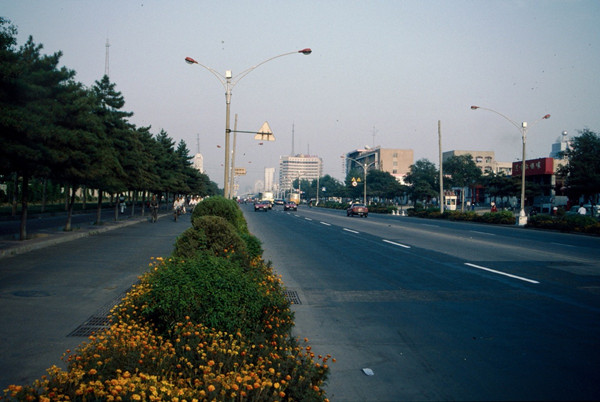Fascinating adventures within and around Baotou


Baotou Gangtie Street 1997 [Photo by Bruce Connolly/chinadaily.com.cn]
Between Inner Mongolia’s two principal cities, Hohhot, the capital, and Baotou, its major industrial centre, a wide east-west valley allows rapid communication by both road and rail. To the north rises a line of mostly treeless hills beyond which an almost waterless desert stretches right through to Ningxia, Gansu and across northwestern China. This green corridor overlaps the Yellow River’s Great Bend. Were it not for those waters then desert would inevitably have covered much of what today is fertile agricultural land.The railway and indeed the roads are effectively modern day updates for the historic northern Silk Road This corridor has long had significance as a major routeway between central Asia and Beijing. From Lanzhou in today’s Gansu Province flotillas of sheepskin rafts once carried goods down the Yellow River to Baotou for onward transshipment by camel caravan. This traffic was however only one way for that river’s fast moving currents made it impractical to sail back upriver, instead carts or camels were employed. However construction of a railway from Beijing eventually reached Baotou in 1923 transforming that formerly remote settlement into a railhead for traffic from across much of the northwest. In the 1950’s the railway was pushed through to Lanzhou, eventually linking right through to Xinjiang.
MOST POPULAR
- 1 A look at China's economy in Q1 of 2024
- 2 China to remove foreign ownership restrictions in value-added telecom services in pilot areas
- 3 Query service of A Guide to Working and Living in China as Business Expatriates launched
- 4 Clear negative lists to speed up services trade
- 5 Canton Fair opens in China with surge in overseas purchasers
Editors' Picks
 Infographic:
How to understand China's production capacity
Infographic:
How to understand China's production capacity
 Infographic:
Milestones of China's journey to space
Infographic:
Milestones of China's journey to space





